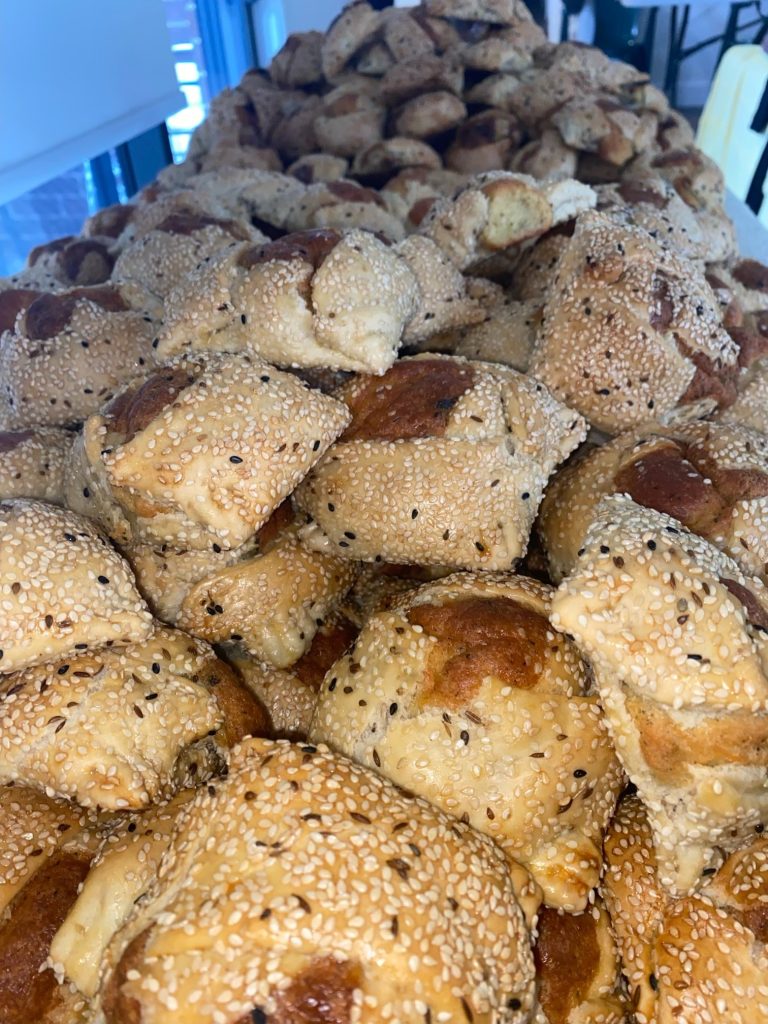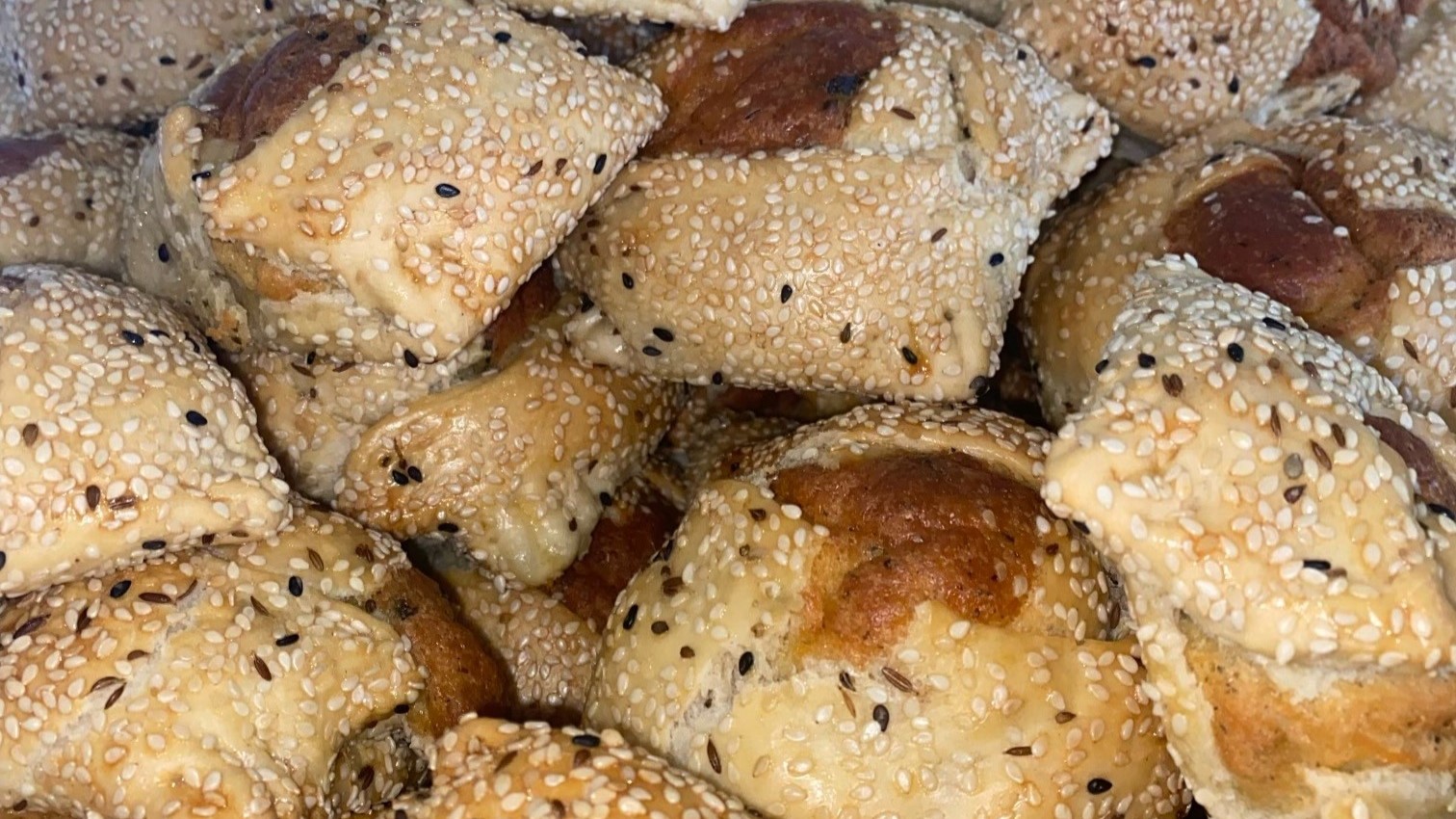Around this time of the year, the sweet smells of many Easter treats fill Greek and Cypriot kitchens. One traditional Cypriot Easter treat is the pastry of flaounes.
Baked with special flaouna cheese made out of sheep or goats milk, many Cypriots break their fast on Easter Sunday with this cheesy treat!
To make a batch of 12-15 flaounas, follow the recipe below. Check out our Instagram reel for a visual guide too @thegreekherald.
Ingredients:
For the Flauna Dough
- 500g plain flour
- 2 eggs
- 1 tsp baking powder
- 1 teaspoon Mahlab ground to a fine powder
- 1 teaspoon Mastic ground to a fine powder
- 1 teaspoon of sugar
- 125g butter, melted
- 1 sachet easy bake yeast
- a pinch of salt
- A dash of warm milk for kneading (about 80ml)
- 60ml warm water
For the filling and glazing
- 500g Flaounas cheese or alternatively 250g haloumi and 250g mild cheddar
- 1/4 cup semolina
- 2 eggs
- 1 tsp baking powder
- 1 tsp mahlab
- 1 tsp mastic
- 1 tsp chopped fresh mint
- 120g raisins
- 1 egg, whisked (for the glazing)
- 1/2 cups sesame seeds (for the glazing)

Method:
1. In order to have the best texture for your flaouna, it is best to prepare the filling from the night before or at least 4-5 hours before baking. This would allow the cheese filling to dry out and be able to absorb more of the “moisture” from the liquid flaouna ingredients.
2. Start off by grating the cheese as fine as you possibly can. Add the beaten eggs, the raisins, the mint, the mastic, mahlab and the semolina and mix thoroughly. Cover it with a cloth and place in the fridge overnight or for at least 4-5 hours before baking.
3. Next off start preparing the dough. The dough is more like a shortbread and not very bread-y hence be careful not to overwork the dough as your flaouna will be a bit doughy. In a large bowl sift the flour, add the salt, baking powder, the mahlab, mastic and mix thoroughly.
4. Add the liquid ingredients to your flaouna recipe mixture which are the butter and eggs and gently mix the flaouna dough with your fingers. Dissolve the yeast in the warm water with the sugar, pour into the dough and then add the warm milk. Be careful for your water and milk to be only lukewarm and not hot as they will kill your yeast!
5. Continue kneading the dough for a few minutes until the texture is firm but not bread-like. If the dough is too wet add a little more flour but be careful not to overdo it as you don’t want the flaouna to have a bread-y texture. Cover the dough mix with some cling film and let it rise for 1-2 hours or until it has almost doubled in size.

6. Now its time to start assembling your flaouna! Get the filling mixture out of the fridge and add the remaining mixture ingredients. Mix thoroughly and set it aside. Pour the flaouna dough out of the bowl and roll out in thin sheets. Cut into 12 by 12 cm rectangles, about 5 inches in each dimension. Sprinkle the sesame seeds on a small plate with approximately the same size as the flaouna dough rectangles
7. Glaze the outer side of the flaouna dough with the whisked eggs and press it down on the sesame seeds. That will ensure that the seeds are firmly embedded in the dough. Grab a handful of the cheese filling and form a ball. Place in the centre of the dough (sesame seeds facing outwards), glaze the edges with a little more whisked egg and fold, pinching the corners together to form the flaouna shape.
8. Once all your flaouna are shaped, place them on a baking tray lined with grease proof paper, let them rise for about 30-45 minutes and then bake in a pre-heated oven at 200C for about 40 minutes, or until golden brown.
Source: My Greek Dish

